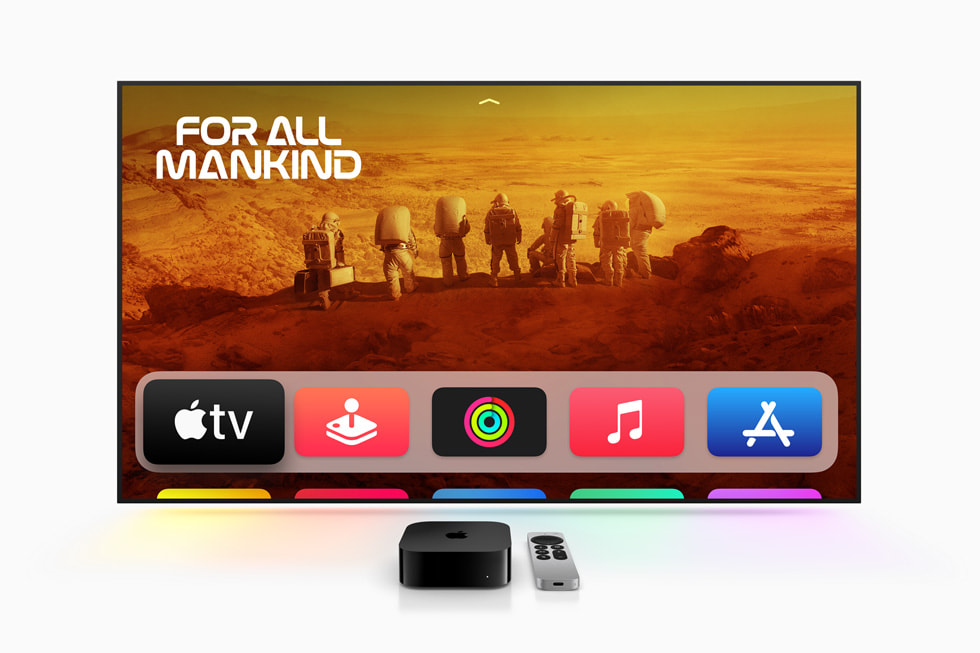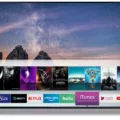When it comes to setting up your Apple TV 4K, one important consideration is the HDMI cable you use. While Apple does not include an HDMI cable with the device, it is crucial to choose the right cable in order to fully enjoy all the features and capabilities of your Apple TV.
Firstly, it is important to note that Apple TV 4K requires an HDMI 2.0 or later compatible cable. This means that older HDMI cables may not provide the necessary bandwidth to support the high-quality video and audio output of your Apple TV.
While you can technically use any HDMI cable that supports Dolby Vision, high-resolution video formats, and HDR, it is recommended to opt for an HDMI 2.1 cable. HDMI 2.1 cables offer the latest technology and capabilities, ensuring the best possible performance and compatibility with your Apple TV 4K.
When it comes to choosing an HDMI cable, there is a wide range of options available in terms of price and quality. The cost of HDMI cables can vary significantly, ranging from a few pounds to several hundred pounds. However, it is important to note that a higher price does not necessarily guarantee better performance.
It is worth considering Apple’s own HDMI cable, as it is designed specifically for Apple devices and may provide seamless compatibility with your Apple TV. However, there are also many reputable third-party HDMI cable options available that offer excellent performance at a more affordable price.
Ultimately, the choice of HDMI cable depends on your personal preferences and budget. If you are a tech enthusiast or have a high-end home theater setup, investing in a high-quality HDMI 2.1 cable may be worth it to fully maximize the capabilities of your Apple TV.
However, if you are simply looking for a reliable and reasonably priced option, there are many HDMI cables on the market that will work perfectly fine with your Apple TV 4K. Just ensure that the cable you choose is HDMI 2.0 or later compatible to ensure optimal performance.
While Apple TV 4K does not come with an HDMI cable included, it is essential to choose the right cable to fully enjoy the features and capabilities of your device. Whether you opt for Apple’s own cable or choose a reputable third-party option, make sure it is HDMI 2.0 or later compatible for the best performance.

Do I Need To Buy An HDMI Cable For Apple TV?
You need to buy an HDMI cable for Apple TV. Specifically, for Apple TV 4K, you will need an HDMI 2.0 or later compatible cable to connect it to your television or display. This is important because an HDMI 2.0 cable supports the higher resolution and better picture quality offered by Apple TV 4K.
However, if you want to access all the advanced features and capabilities of your Apple TV, it is recommended to use an HDMI 2.1 cable. This latest version of the HDMI cable offers even more benefits, such as support for higher refresh rates, enhanced audio formats, and improved gaming experiences.
To summarize the information:
– For Apple TV 4K, a minimum requirement is an HDMI 2.0 cable.
– To access all features and capabilities, an HDMI 2.1 cable is recommended.
Remember to choose a high-quality HDMI cable that meets the necessary specifications for optimal performance.
Why Doesn’t Apple TV Come With A HDMI Cable?
Apple TV does not come with an HDMI cable primarily because of cost considerations and Apple’s desire to provide flexibility for its customers. Here are a few reasons why Apple chooses not to include an HDMI cable:
1. Cost-effectiveness: Including an HDMI cable in the Apple TV package would increase the overall cost of the product. Apple aims to offer competitive pricing for its devices, and by excluding the HDMI cable, they can keep the price more affordable.
2. Compatibility with existing setups: Many users already have HDMI cables at home due to their prevalence in modern devices. Including an HDMI cable with every Apple TV purchase would be redundant for those who already own one. By excluding it, Apple allows customers to use their existing cables, saving them money and reducing waste.
3. Customization options: Different users have varying HDMI cable needs depending on their specific setup requirements. By not including a cable, Apple gives customers the freedom to choose the length, quality, and brand of HDMI cable that best suits their needs. This allows for more personalized and tailored setups.
4. Encouraging future-proofing: HDMI technology is constantly evolving, with new versions and features being introduced regularly. By not including an HDMI cable, Apple encourages users to invest in the latest cables that support the most recent HDMI standards, ensuring optimal performance and compatibility with future devices.
5. Environmental impact: Including unnecessary cables with every Apple TV purchase would contribute to electronic waste. By omitting the HDMI cable, Apple promotes a more environmentally friendly approach by reducing the number of unused cables that might end up discarded.
It’s worth noting that Apple typically provides a list of recommended accessories, which may include HDMI cables, on their website or in-store. This allows customers to choose and purchase the cable that best suits their needs, ensuring they have the appropriate connection for their specific setup.
Does Apple TV 4K Need Special HDMI Cable?
The Apple TV 4K does require a special HDMI cable to fully utilize its capabilities. While it is possible to use any HDMI cable that supports Dolby Vision, high-resolution video formats, and HDR with the Apple TV 4K, it is recommended to use an HDMI 2.1 cable for optimal performance.
Here are a few reasons why having an HDMI 2.1 cable is beneficial for Apple TV 4K:
1. Enhanced Video Quality: HDMI 2.1 cables support higher bandwidth, allowing for higher video resolutions and refresh rates. This means you can enjoy 4K content at 60 frames per second or even 8K content if available. With an HDMI 2.1 cable, you can experience the best possible video quality on your Apple TV 4K.
2. Dolby Atmos Audio: HDMI 2.1 cables also support enhanced audio formats like Dolby Atmos. This enables you to enjoy immersive sound experiences, where audio objects can be precisely placed in a three-dimensional space. With an HDMI 2.1 cable, you can take full advantage of the Dolby Atmos support on the Apple TV 4K.
3. Variable Refresh Rate (VRR): HDMI 2.1 introduces VRR, which allows the display’s refresh rate to sync with the content being played. This eliminates screen tearing and provides a smoother viewing experience, especially during fast-paced action scenes or gaming. If you’re using your Apple TV 4K for gaming, an HDMI 2.1 cable can enhance your gameplay by reducing lag and providing a more fluid experience.
4. Quick Media Switching (QMS): HDMI 2.1 cables also support QMS, which reduces the delay when switching between different content formats. This means you won’t experience any black screens or delays when switching between different apps or content on your Apple TV 4K.
To summarize, while it is possible to use any HDMI cable that supports the necessary video formats with the Apple TV 4K, investing in an HDMI 2.1 cable will ensure you get the best possible video and audio quality, especially if you have a compatible TV or audio setup.
Conclusion
Apple TV 4K is a powerful streaming device that offers a wide range of features and capabilities. While it may require the use of a compatible HDMI 2.1 cable to access all of its features, it is worth investing in one to fully enjoy the high-quality video formats, such as Dolby Vision and HDR. Apple TV 4K provides a seamless streaming experience with its advanced technology and sleek design. Although it would have been convenient for Apple to include their own cable with the device, it is a minor inconvenience that can easily be resolved by purchasing a compatible HDMI cable. Apple TV 4K is a great addition to any entertainment setup, delivering stunning visuals and a user-friendly interface.








